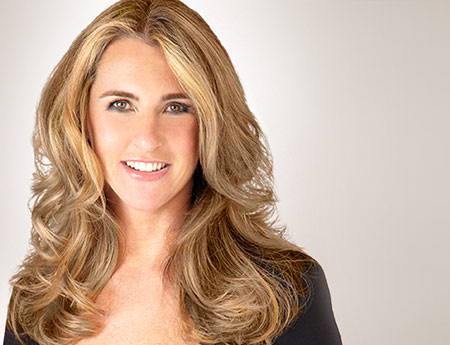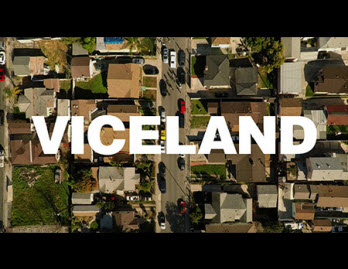Of Vice and Men
Vice Media is again taking it on the chin, after a report in the Wall Street Journal further chronicled its financial troubles, exacerbated by a write down by one of its biggest investors that appears to show it has lost nearly $1 billion in value over the past year.
The Journal said Vice, the home of about a dozen websites like Munchies, Free, Garage, Motherboard and Tonic as well as cable channel Viceland and HBO documentary news shows Vice Weekly and Vice News Tonight, will shed 10% to 15% of its workforce through attrition, adding that the media company has again fallen short of revenue targets.
According to the Journal, citing people familiar with the privately held company, Vice revenue will be flat at between $600 million and $650 million in 2018, about $100 million short of forecasts. This is the second year in a row that the media company has fallen short of expectations and it is expected to lose about $50 million this year after losing $100 million in 2017.
Adding to the pressure is the revelation by the Walt Disney Co., that it took a $157 million write down of its investment in Vice in fiscal 2018, a move that suggests the company has lost about $800 million in its valuation in the past year.
Disney sunk about $400 million into Vice in 2015, sending its valuation to about $4 billion at the time, but it isn't the media company's biggest investor. That honor belongs to private equity firm TPG, whose $450 million investment in Vice last year pushed its total value to $5.7 billion. While Disney is still ahead of the game -- an $800 million drop in valuation still means Vice is valued at $4.9 billion -- it appears that Vice, once touted for its mastery in attracting the hip, millennial audience that every content producer and advertiser craves, may be loosening its grip.

Vice made moves earlier this year to right the ship and jettison the boys club culture that had led to a handful of sexual harassment allegations, hiring former A+E Networks chief Nancy Dubuc to head up the company while pushing founder and head bad boy Shane Smith to the role of executive chairman. A+E Networks is an investor in Vice too, it sunk $250 million into the company in 2014 and it was A+E's H2 channel that was transformed into Viceland, with great expectations, a year later.

Now Dubuc, about six months into the job -- she officially started on May 29 -- is making some big changes. In addition to the workforce reduction, which includes a hiring freeze initiated less than two months ago which has left about 220 of its 3,000 employee positions open, Vice plans, according to the Journal, to pare down its nearly one dozen digital sites by half.
Dubuc has pledged to make Vice profitable, but that too is a matter of interpretation. In an interview with The Hollywood Reporter she said it would be soon, and "a lot sooner than most people think." At the New York TimesDealbook conference on Nov. 1, she told interlocutor Andrew Ross Sorkin, that Vice would be profitable "within a fiscal year."

Make no mistake that much of Vice's woes stem from its entrance into the cable realm. Vice has said it was profitable before it launched Viceland. And Dubuc, at the Dealbook conference, blamed placement problems -- Comcast for one, puts Viceland on one of its priciest tiers, not a great position to attract younger cost-conscious viewers -- and carriage difficulties for much of its woes.
Debuc also addressed valuation declines at the Dealbook conference, calling them irrelevant.
"Valuation only matters if your for sale and we’re not for sale right now," Dubuc said at the conference.
What she should have said was Vice isn't for sale yet. Because in her conversation with THR, she admitted that a sale of the company would be the most likely future outcome, although she would "like to see a good couple of years of continued growth under our belts first."
That puts Vice in a bit of a quandary. It probably would do better having some extra time to right the ship, but there is also the risk that the longer it takes, the harder it will be to find a buyer willing to pay what Vice thinks it’s worth.
The bottom line is that cable is hard. And it is especially hard if your target audience is incredibly fickle, like young people. Sure, they're the demo that every advertiser desires, but the rec room is littered with programmers that may have had the pulse of the next generation one year, only to find their arteries hardening the next. MTV, Nickelodeon, MySpace and others all had their moments in the 12-24 demographic sun, but this year's teenager is next year's young adult, with different interests, time constraints and viewing habits. And the generation behind them wants nothing to do with their definition of cool.
Dubuc isn’t unaware of that. At the Dealbook conference, she said that Vice is “in the service of youth permanently. That will continue to change because every generation is going to demand its own characteristics, its own flavor.”
Vice is not alone in its difficulties. Other digital powerhouses have announced layoffs as traffic has slowed. According to the Journal, Vox Media and Refinery29 have missed revenue targets, with Refinery29 announcing in October that it will lay off 10% of its workforce. And Vox said earlier this month that it would fold popular tech site Recode into the parent and relaunch it as a section of Vox.com next year. No workforce reductions are planned, but the moves come as traffic has declined and some high-profile journalists have left for other ventures.
Dubuc is a talented, seasoned TV executive, and hopefully she can pilot a turnaround at the media company. And if the problem is increasing carriage alone, she is definitely the person you would want at the helm to do that. But convincing distributors to add on cable networks -- even ones targeted at younger viewers -- is harder than it used to be because there is a lot of evidence that younger viewers are shying away from linear TV in increasing numbers.
And the bigger problem Dubuc is facing is one that confronts every TV and media executive: how to get an audience brought up on free information to pay for it, or at least watch advertising in some form that foots the bill. With more media and entertainment alternatives cropping up almost every day, each with a thirst for scale, it’s a question that needs answering sooner rather than later.
Multichannel Newsletter
The smarter way to stay on top of the multichannel video marketplace. Sign up below.
